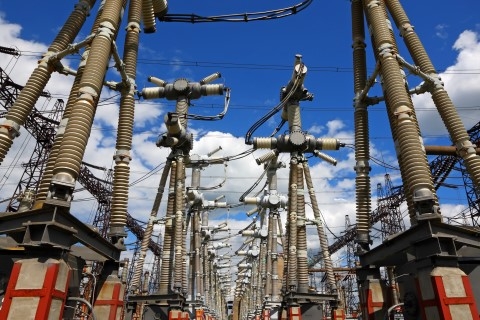
Why Japan's concerns about Canadian Solar are overblown
In line with recent grid connection news.
Given that Canadian Solar (CSIQ) has 406MW late-stage pipeline of projects in Japan, obvious concerns were raised if CSIQ has the necessary approvals, in line with recent news regarding the suspension of new applications for grid connection.
According to a research note from Nomura, it reached out to CSIQ management and noted several insights. First, CSIQ has 150MW projects for which it has third and final approvals with final connection dates set.
Further, the remaining ~250MW projects have at least one if not two approvals and thus are likely to be exempt, in Nomura's view.
CSIQ has only 2MW project pending in Kyushu where it does not yet have third and final permit. Majority of remaining projects are in Chubu, Kansai and Kanto regions – which have not yet stopped accepting applications.
Nomura believes the 150MW for which CSIQ has all permits is a given by mid-2015F and this size may be sufficient for it to evaluate a yieldco like vehicle for listing in Japan, in our view.
As such, we are not concerned about CSIQ not being able to deliver on its Japan pipeline.
Here's more from Nomura:
Japan utilities suspend new applications for grid connection. This was kick-started by Kyushu Electric Power on 24 September 2014 when it announced that it had temporarily suspended replying to applications for the grid connection of renewable energy power generation facilities in mainland Kyushu.
This was followed by Hokkaido Electric Power, Okinawa Electric Power, Tohoku Electric Power and Shikoku Electric Power – all of which essentially reiterated the stance taken by Kyushu Electric Power.
Some media reports in market have used these releases to suggest that Japan has completely closed the grid access to renewable energy sources.
We believe this is erroneous. As noted in this article on Nikkei Technology (a respected Japanese technology news service) which provided more details on the announcement, there are four major points:
During the suspension period the utility companies are not replying to new applications requesting grid access.
Any high-voltage/extra-high voltage facility for which an application has already been submitted and a notification of acceptance has already been sent is exempted.
Even during the suspension period, if a power producer proposes a measure to stop transmitting electricity to the power grid during daylight hours by, for example, installing a storage battery system at a solar/wind power plant or adjusting the output from a biomass/geothermal/hydraulic power generation facility, Kyushu Electric will individually negotiate.
The key reason for the suspension is that the total number of applications it has received so far amount to 12.6GW if fully constructed. In contrast, the total peak power demand for Kyushu is 11GW.
Kyushu Electric considers 50% of capacity on renewables as technically possible; albeit the number of applications is more than 100%.
Thus, we agree that accepting further applications here is a futile exercise till there is a path towards grid connectivity to other regional grids.
METI has set up a committee to discuss and work through the issues with first meeting to be held in mid-October.
That said, we do not see a slowdown in completing approval process for applications which already have an acceptance and thus project installations and in turn Japan demand will remain stable.























 Advertise
Advertise







